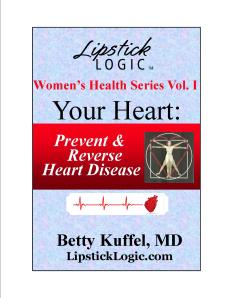 The first volume in our women’s health book series is in the final editing process. After many iterations, our cover has evolved to the attached image. We aren’t sure this will be the final but it’s close.
The first volume in our women’s health book series is in the final editing process. After many iterations, our cover has evolved to the attached image. We aren’t sure this will be the final but it’s close.
As many newly published e-book authors know, the old adage You can’t tell a book by its cover doesn’t hold true anymore. The first glimpse at a book cover should be readable in postage stamp size. Subtitles can tell it all and many sources suggest using a subtitle to further identify your book contents to those people skimming titles on the many Internet sites available to all of us.
With expanding knowledge in the e-book, media and marketing world, it is difficult to keep up with the many options.
Blue Heron Loft has done a great job in creating this cover and my Eyes of a Pedophile cover. http://www.blueheronloft.com
Your Heart is a complete handbook of the anatomy, physiology and dynamics of heart health. It provides detailed explanations of many types of heart disease, some specific to women, and choices you can make to maintain a healthy heart. By learning about a disease that impacts so many lives and then taking steps to improve your own cardiovascular health and the health of your family, who knows? – You may save your life or the life of someone you love.
Below is an excerpt from Your Heart: Prevent and Reverse Heart Disease:
DIFFERENCES IN THE FEMALE HEART
Early in life, male and female hearts look and act the same. With aging, gender differences in disease processes become apparent and often contribute to misdiagnosis in women. Men develop the usual type of arterial heart disease which narrows the large coronary arteries on the heart surface. Women often have narrowing of large coronary arteries like men, but females are also prone to developing coronary microvascular dysfunction (CMD) – a problem involving the small vessels called arterioles. In the face of inflammatory disorders that often affect women more than men, these tiny arterioles become stiff and unable to supply adequate oxygen to the heart muscle.
A number of health problems cause inflammatory changes: high blood-sugar, smoking and chronic infection. Additional factors like poorly controlled premenopausal hypertension, anemia and rheumatologic disorders also affect women and are thought to contribute to the development of CMD. However, the specific cause of CMD is still unknown and anyone can develop these changes. Coronary microvascular dysfunction cannot be treated with stents or bypass, but medications are beneficial and life prolonging.
Special tests are required to diagnose CMD. Women may have advanced microvascular changes and be at risk for a heart attack, yet a coronary angiogram — the best diagnostic evaluation for large coronary arteries — may appear normal. When the angiogram is normal but clinical suspicion for heart disease is high, a “Stress-Echo” is recommended to evaluate for CMD. Diagnostic methods are discussed in SECTION 15.
Heart risks increase in menopause
Menopause is the biological time period when ovary function ceases. Ovaries produce estrogen, progesterone and a small amount of the male hormone, testosterone. At menopause, ovarian production of these hormones stops and hastens the occurrence of changes in the female body.
Not only are there cardiac changes. Around age fifty, when ovarian function naturally fades, most women begin recognizing other bodily changes as well. Some of these are: mood disorder, reduced libido, and hot flushes. But unknown to them, many women also begin silent internal vascular changes leading to heart disease. When premenopausal women have their ovaries surgically removed, the changes of menopause begin abruptly. This is referred to as “surgical menopause.” Starting at a younger age, problems related to estrogen deficiency take a toll on bone health making osteoporosis more likely. In all women lacking estrogen, skin changes become evident with vaginal tissue dryness. Hair may become thinner and skin less resilient.
In the past, hormone replacement therapy (HRT) using estrogen, progesterone or a combination of the two, was recommended. However, based on information from the Women’s Health Initiative, as of May 2012, the U.S. Preventive Services Task Force recommended against HRT to prevent chronic diseases such as: heart disease and osteoporosis. This is based on longitudinal studies over many years, weighing risks and benefits of taking replacement hormones. Still, under some circumstances HRT may be appropriate. If you have concerns, discuss hormone replacement with your physician.
Coronary heart disease gradually increases in women after menopause but can affect younger women, too, including those who have functional ovaries and continue to menstruate. Women under age 55 may not recognize the symptoms of heart disease or don’t seek medical attention believing they are too young to have a heart attack. American Heart Association statistics show heart disease kills 16,000 young women between the ages of 30-55, each year.
Because heart disease in women is variable, women of all ages, not only post menopausal women, should pay attention to symptoms that could indicate heart trouble, such as: indigestion, unexplained dizziness or weakness, jaw aching, sweating and feeling short of breath.
Betty Kuffel MD

